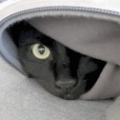n6gn
About
- Username
- n6gn
- Joined
- Visits
- 4,511
- Last Active
- Roles
- Member
- Points
- 18
-
VHF downconverter recommendations?
I've not examined recent products from the Ukraine but I can not recommend the earlier transverters. Perhaps the receive converters are different/better.
How much interest would there be in the creation of a fast-switching block down-converter for the Kiwi? This would be something with a high side, say 3 GHz IF preceded by a [20 MHz] stepping LO that went from, 3-6 GHz, mixer and LPF?
The result would be an "all band" down-converter one [20 MHz] swath at a time such that the Kiwi could use any of it's capabilities over 0-3 GHz? NF and IMD could be good and no additional filtering would be necessary as long as out-of-band signals were kept tolerably low compared to a mixer's spec. +20 dBm TOI should be fairly easy. Of course, filtering could be added at the input, as for a band-limited converter of the type most often used.
It would seem to me that a Kiwi extension to use I2C to control the LO/receive_frequency should not be difficult. The goal would be fast switching so that multiple 20MHz chunks might be stitched together to create a wider spectrogram.
Glenn n6gn
-
Flatness of KiwiSDR response < 500 kHz?
Phil,
Addressing your noise issues and not the spectral display, I would encourage you not to immediately jump to whack-a-mole in seeking to improve Kiwi Performance. Rather, I have found it very productive to examine the coupling mechanism rather than simply trying to stay on top of suppressing interference sources.
For electrically small structures, which almost everything at LF and below is, the radiation resistance is minuscule. For virtually all situations we encounter actual inverse-square radiation from any sources/antennas is far below the interference levels the Kiwi reports. Thus I think it worthwhile to look at near-field and, particularly common mode (CM) coupling mechanisms.
In my experience, the dominant undesired coupling mechanism into the Kiwi is CM current over the path between wired LAN connection and the SMA-end of the Kiwi PCB. This includes the BB ground plane, cape connections and ground plane current paths on the Kiwi PCB. If one uses an isolated source having low self-capacitance (and then perhaps further reduces the potential for CM with a low inter-turn capacitance 1:1 transformer to create a test current source), -10 dBm on 15 MHz injected between the BB RJ45 shell and the Kiwi Antenna SMA results in about -85 dBm displayed on the Kiwi. This is more than 70 dB above the Kiwi noise floor in 1 Hz. At 100 kHz it's only down another 22 dB or so, still far above what the Kiwi can easily detect. It's for this reason that for each of my four Kiwis at the home QTH I have gone to WiFi interface, BBG/Kiwi's as described elsewhere on this forum and BBAIs with their native WiFi interface.
At LF, the noise floor of interest will depend upon the antenna system. Broadband electrically small antennas (they all are at LF and below) have antenna factors rising at 20 dB/decade while the ITU propagated noise, though all over the map with diurnal and seasonal variations, generally falls at about 25 dB/decade of frequency. Thus the noise limit of interest may be quite a bit above the Kiwi's native floor of ~ -157 dB/1-Hz but it still may be well below the kinds of levels that CM current injected via the LAN, PS or even GPS lines might be able to produce within the Kiwi.
For the Kiwi, and really every receive system we use "ground isn't ground" except by definition. But care in examining coupling mechanisms, reducing current in CM paths and symmetry (passive and active baluns) can really pay off and gains made here tend to apply no matter what new SMPS or other noise source pops up in the environs.
As a proof-of-performance it's also very useful to use symmetric antenna structures rather than single ended ones, e.g. monopoles, because the intended antenna, e.g. dipole, can be shorted to observe and confirm that the residue CM is not significantly limiting system performance. Considering the many-10s of dB of symmetry/CM_rejection we may need broadband RF baluns really are insufficient over the 3-4 decades the Kiwi covers.
When CM has been removed, there can still be the issue of near-field coupling to deal with, but I digress...
Glenn n6gn
-
v1.437 From Marco, IS0KYB: AGC threshold bar, Passband overload mute
-
KiwiSDR production status and availability
-
External GNSS-disciplined rubidium input?
I know very little about the TDoA algorithm but I suspect both @jks and @Christoph are correct. Between the limited bandwidth and especially ionospheric propagation, typical Kiwi clock imperfection probably does not become an issue.
For an appreciation of this, you are welcome to examine the phase of one of NIST's transmitters received via a visual line-of-sight 20km path and displayed on a Kiwi having a ~.1 ppb (1e-10) GPS-disciplined external clock:
and by a different 'stock' GPS-corrected Kiwi at the same distance and also not receiving via the ionosphere:
Then have a look at a time/frequency signal via the ionosphere, CHU on 14670 kHz
(3) N6GN CHU 14670
or if conditions don't permit, perhaps 7850 kHz
Whether or not the the phase wander from the standard Kiwi in (2) causes significantly extra error compared to the bandwidth and sample-length restrictions and ionospheric variations would need to be examined more closely but I rather doubt it. Thus, improving the Kiwi's local clock probably wouldn't make much difference in the TDoA accuracy or resolution.
I think this is the primary reason that long-distance HF standard frequency transmissions tend to be only useful to .1 ppm. 1e-7, or so. Even though as-transmitted error may be 1e-12 the ionospheric path length is varying too much, particularly near the MUF for better accuracy.





